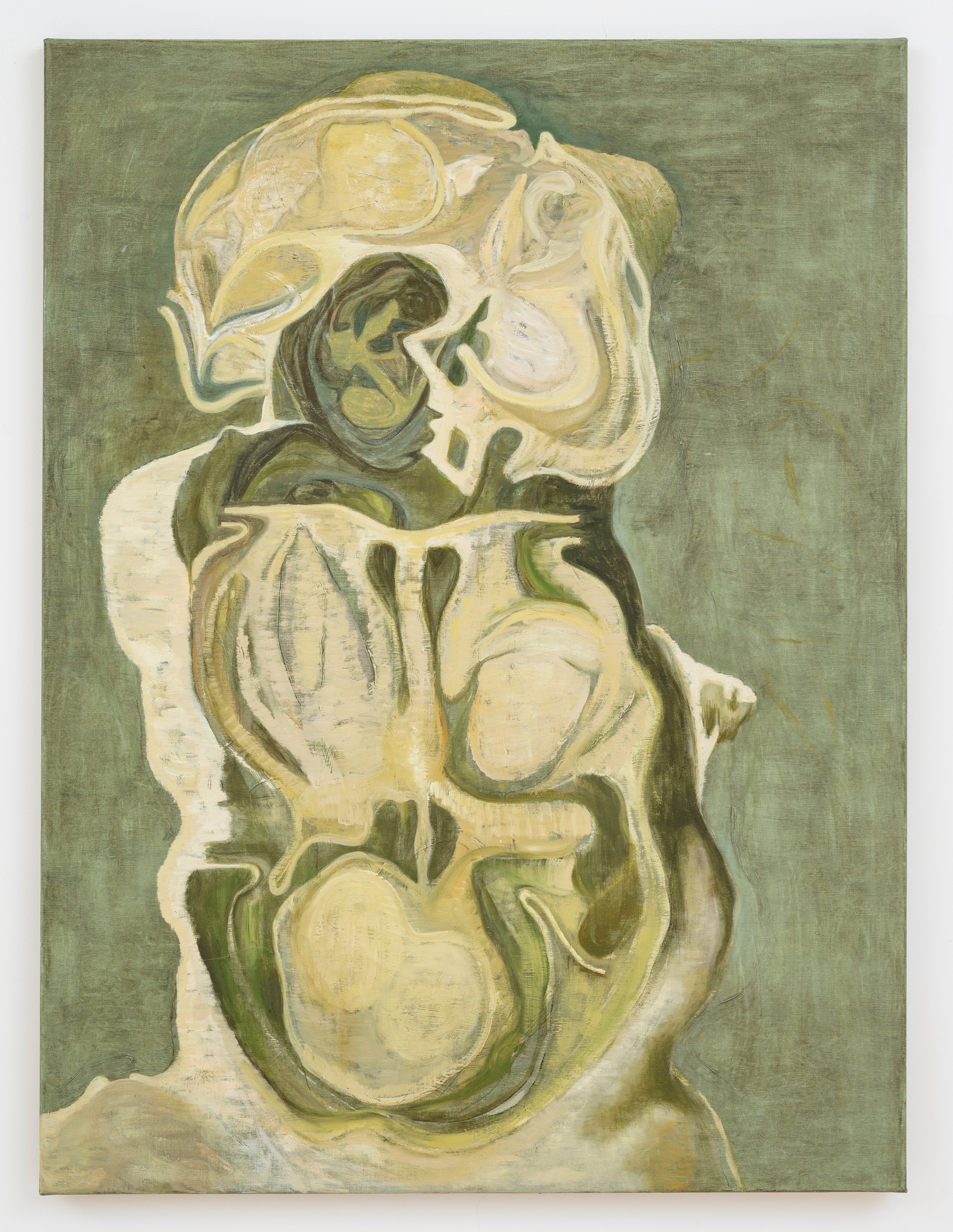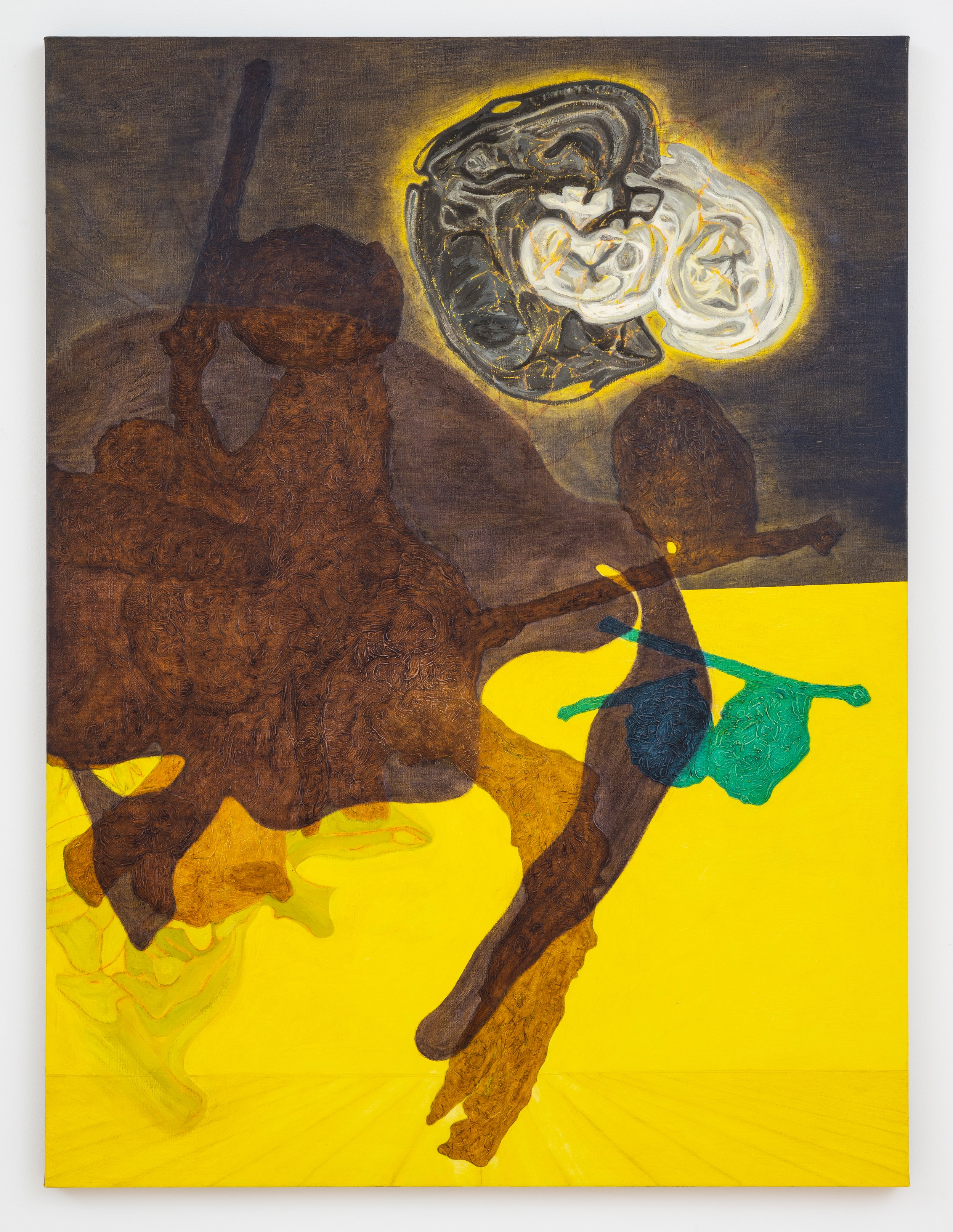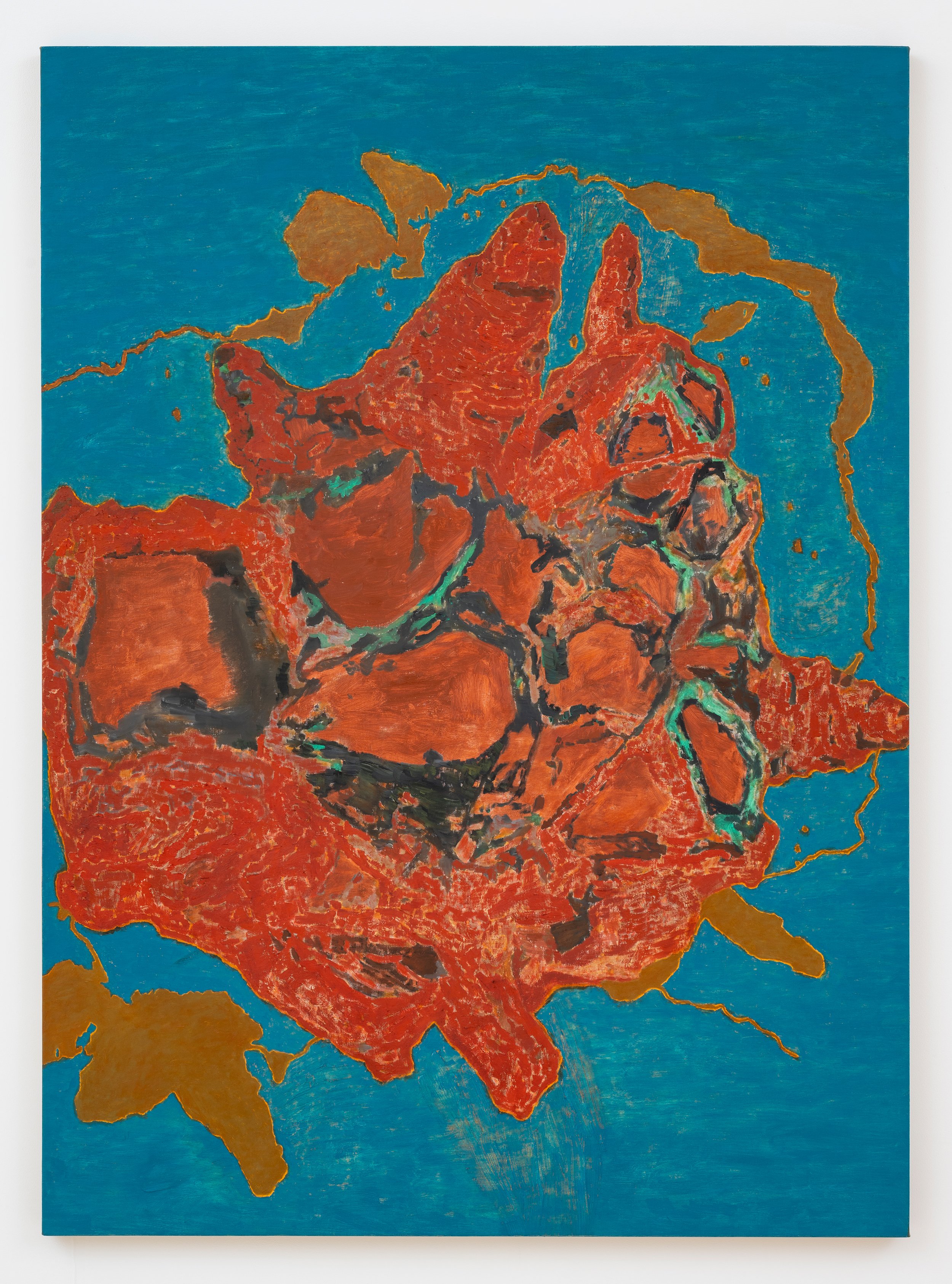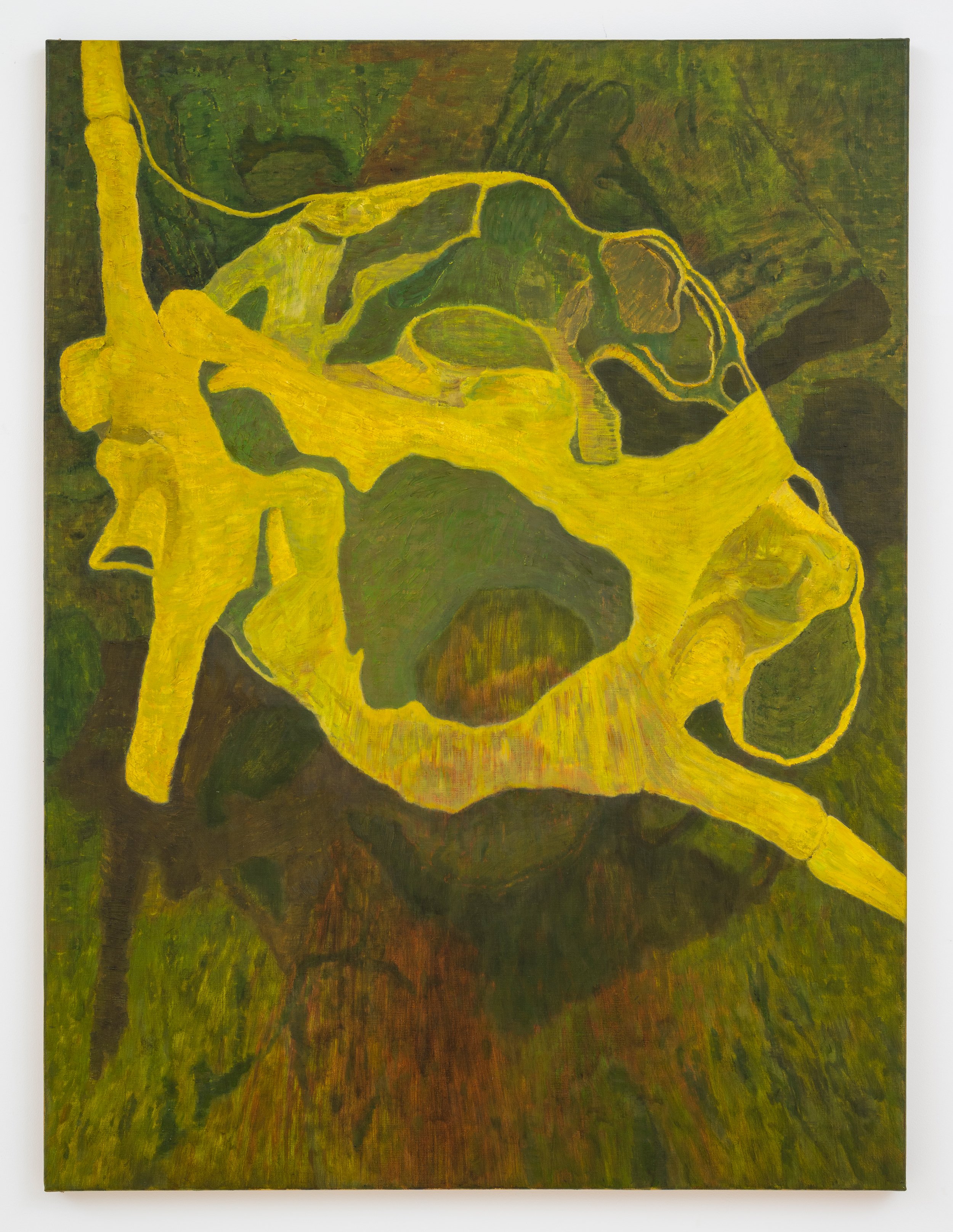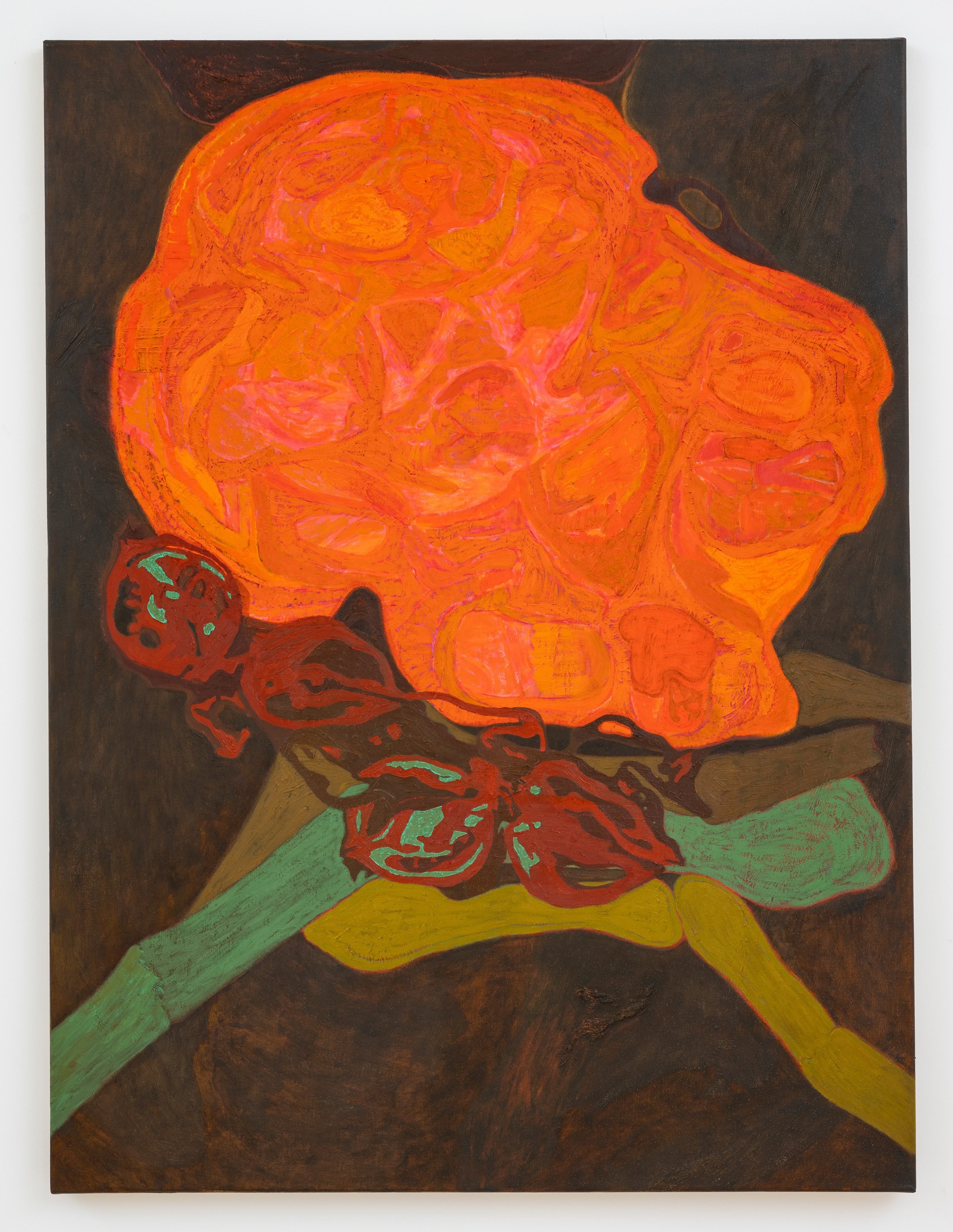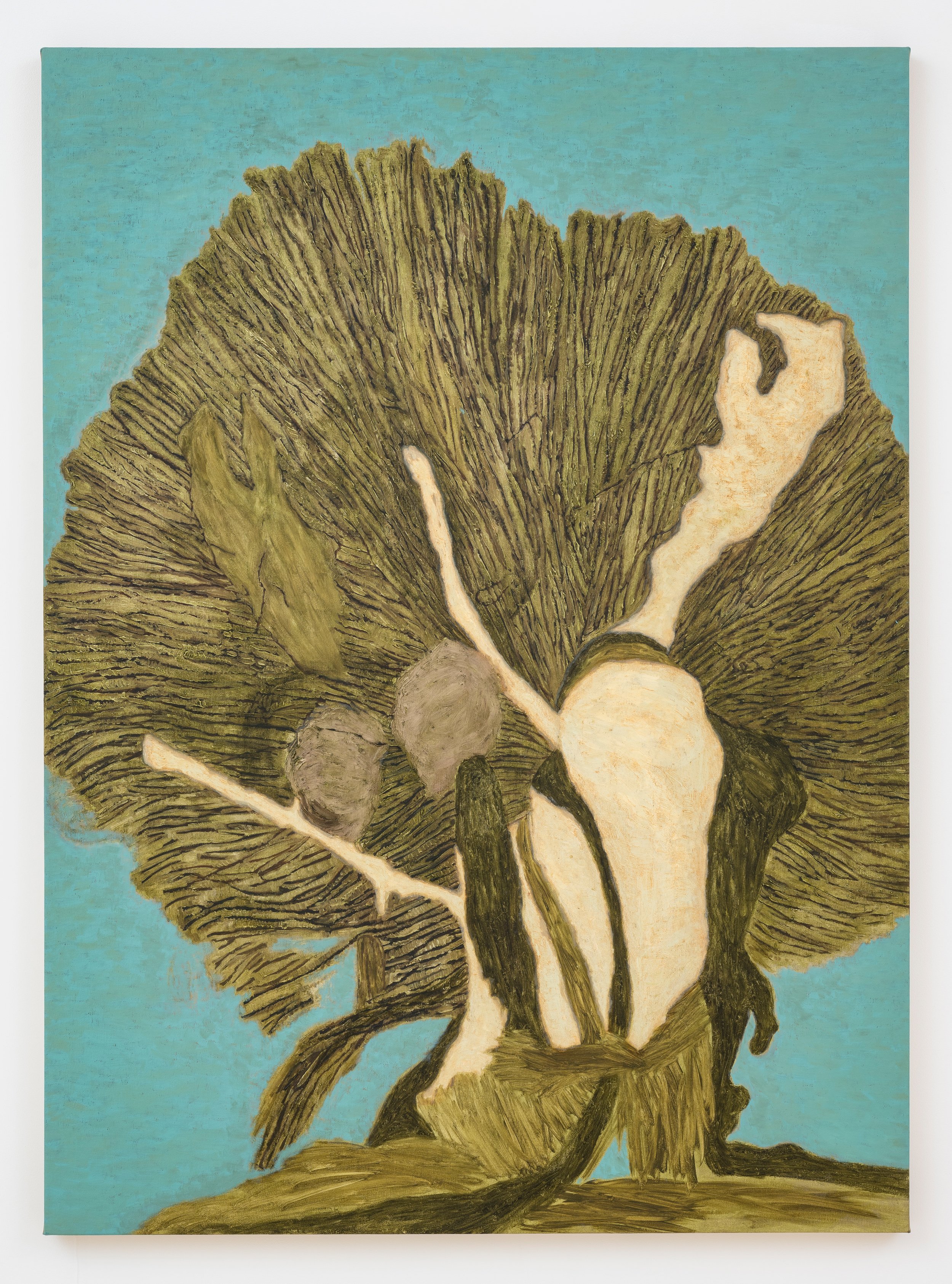Randy Wray: Particulars
MAMOTH, London, UK, June 8 - July 23, 2022
Installation view, MAMOTH
Installation view, MAMOTH
Pletha, 2020–2022, oil on linen, 40 x 30 inches
Host, 2020–2021, oil on linen, 40 x 30 inches
Shade, 2021–2022, oil on linen, 40 x 30 inches
Vasque, 2021–2022, oil on linen, 52 x 38 inches
Tether, 2019–2021, oil on linen, 40 x 30 inches
Oric, 2019–2021, oil on linen, 40 x 30 inches
Peacock, 2019–2021, oil on linen, 52 x 38 inches
Randy Wray’s paintings resist any circumscribing definitions. While they reveal an attraction to natural forms, and wander through an expanse of gesture that charts its path through biological, ecological, and archaeological memories, they always step back from the edge of interpretation; delaying our ability to understand them right as they get to the border. At times they appear like glowing fossils, unfamiliar but singed with gothic undertones, and echo something plangent; particularly when Wray seems to be citing radiographical shapes and MRI scans. But importantly, the shapes he creates have a slow rhythm, a speed encoded in the brushwork, that makes them undulate and pulsate with life. Each shape keeps its boundary, its membrane, while keeping the spaces in between them active with the possibility of transmission. It is Wray’s series of about-turns, his decision-making process of not-this, that creates blooms of energy from their enchanting none-of-the-above.
While forming delays in graspable meaning, they also form connections to Wols and early tachisme, while extending into graphic color through their seductive facture and memory-like surfaces. Flickers of the dense surfaces of Odilon Redon or Albert Pinkham Ryder find themselves tethered to the formal and psychic explorations of Graham Sutherland. It is Wray’s shadows that do the heavy lifting, the shapes that feel like they’ve never known light, that allow for the vibrant charges of Cadmium Orange or Bismuth Yellow to glow and burn like sulphur in ways that haunt us. They sear their way into our mind’s eye to store themselves in the same places that we keep sunsets, flashes of intense color and light, and awe.



